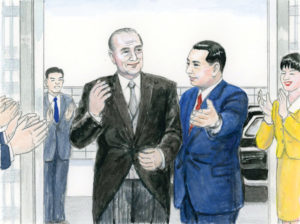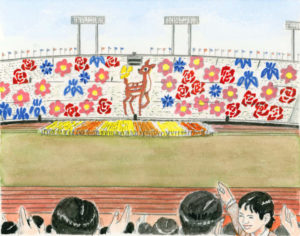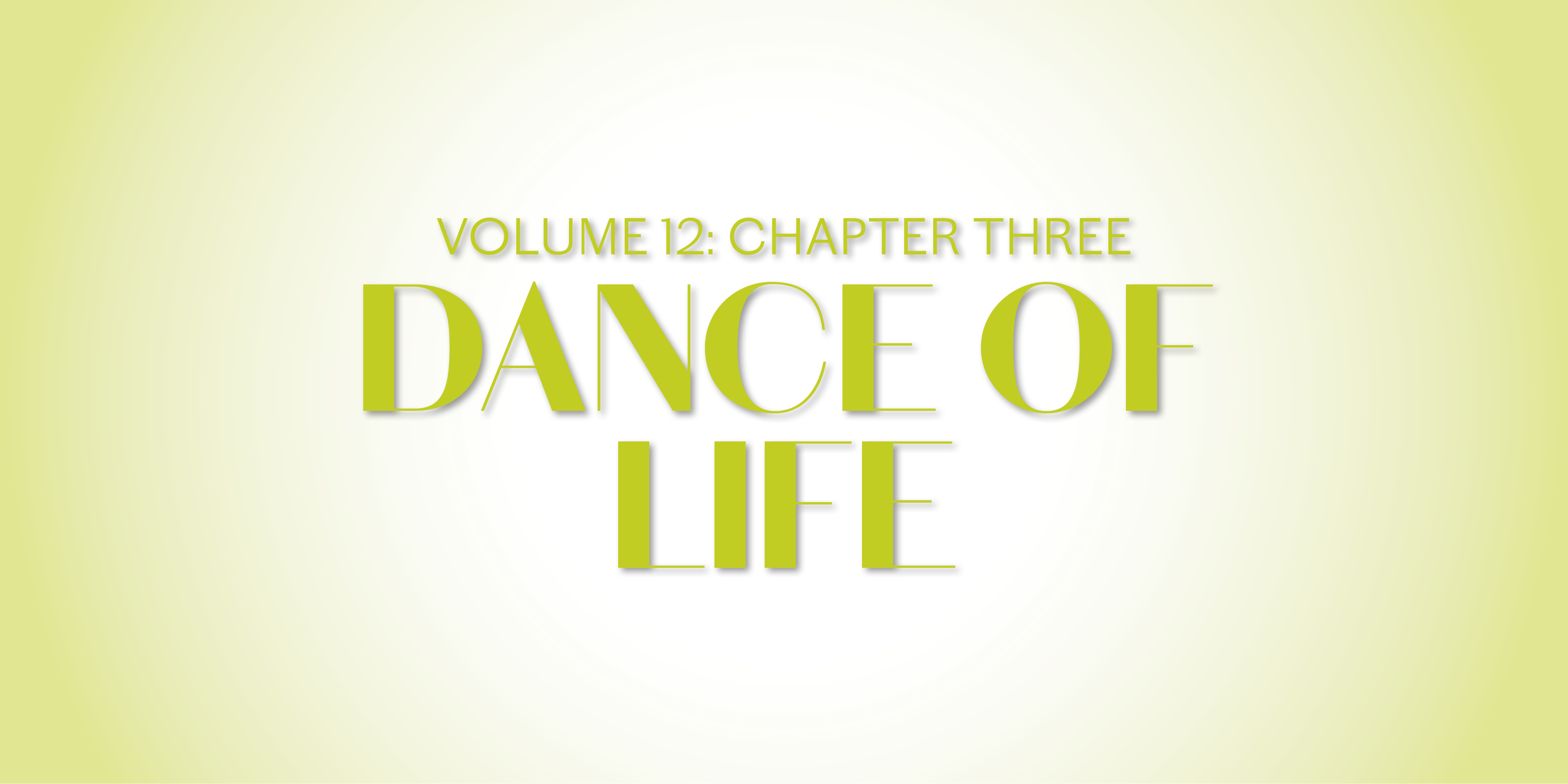Chapter Summary

Illustration courtesy of Seikyo Press.
On September 1, the newly completed Soka Culture Center opened in Shinanomachi, Tokyo. This was followed by the grand opening of the Kansai Culture Center in Tennoji Ward, Osaka. These centers served as symbols of the Soka Gakkai, an organization dedicated to promoting peace and culture worldwide based on Nichiren Buddhism.
During this year, Shin’ichi had traveled around the country presenting mottoes to each region to encourage the members. He announced a new motto for Shikoku: “Be Reformers Building a Land of Happiness.” And for Kyushu he presented the motto: “Kyushu—Ever-Blazing the Trail.”
On October 15, the Tokyo Culture Festival was held at the Tokyo National Stadium. The festival featured a card stunt display of a soaring red eagle and other scenes involving seemingly infinite variations created by 42,000 card-stunt performers and a vibrant dance arrangement, among many other performances.
In preparation for the festival, each person engaged in their own victorious drama of facing challenges and breaking through their limitations. The performers filled the stage with youthful and boisterous dances that seemed to extend to the heavens.
Contributing to the festival’s great success were members who drew the designs for the card stunt display and those who choreographed each performance. And immediately after the festival drew to a close, Shin’ichi went outside the stadium to thank the youth who were cleaning up the grounds and directing traffic.
On October 30, Shin’ichi met with Count Richard Coudenhove-Kalergi, a leading proponent of European unification. The two men who sought to realize lasting peace found strong resonance in their views and ideas. Their dialogue, titled Civilization: West and East, was published several years later in Japanese.
Unforgettable Scene

Illustration courtesy of Seikyo Press.
Casting Aside Status and Position
In October 1967, the Tokyo Culture Festival was held at the National Stadium where 42,000 people mesmerized audiences with a card stunt, illustrating scenes such as a fawn dashing through a flower garden and landscapes from all over the world.
Some of the arts division members working on the designs were well-known artists … But the selection process was so stringent that even the works of these artists were turned down. The members choosing the designs … would not accept any that failed to impress and convince every one of them.
But no matter how many times the work was rejected, not a single artist complained or threatened to quit. They had all completely put aside their personal fame and prestige. This was because they all decided from the start to work together to create the best card stunt possible and make the festival a historical event.
As a result, when one of their designs was rejected, they sincerely reflected on its shortcomings and challenged themselves even harder. One young member of the arts division, surprised by their humility, remarked to one of the renowned painters: “I never imagined that a famous artist such as yourself would volunteer to design a card stunt.”
Smiling, the artist replied: “I am a Soka Gakkai member before I am a painter. I am only doing what I can to contribute to our culture festival, which will open a new age of kosen-rufu. I understand that the festival will also be filmed, which means that millions of people will eventually see it. I think it’s wonderful to be able to contribute to touching those people’s hearts and giving them courage and hope.
“Our work also demonstrates how great Nichiren Buddhism is. This is a unique and precious opportunity indeed. In addition, it is rare for artists of different styles and ways of thinking to work together to create a new art form. I’m usually shut off in the world of my own creative vision, so this is a tremendous chance to receive new stimuli and inspiration.
“I’m hoping that through this endeavor, I’ll break through the shell of my small, narrow self and expand my state of life.” (The New Human Revolution, vol. 12, pp. 190–91)
Key Passage
Culture is the highest expression of human nature. Creating a brilliant culture requires the cultivation of people’s lives and spirit as well as the fostering of rich humanity. That is the purpose of religion. (NHR-12, 178)
You are reading {{ meterCount }} of {{ meterMax }} free premium articles

